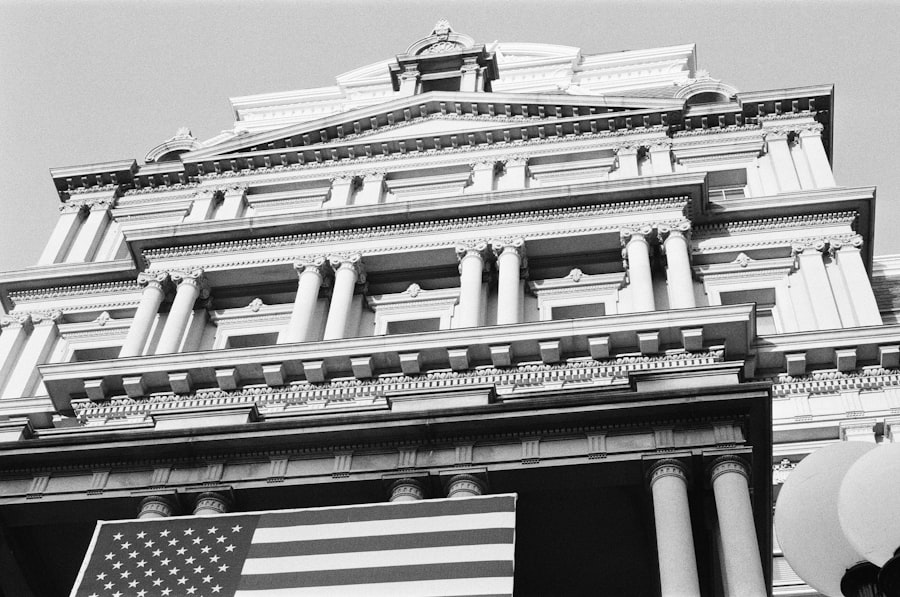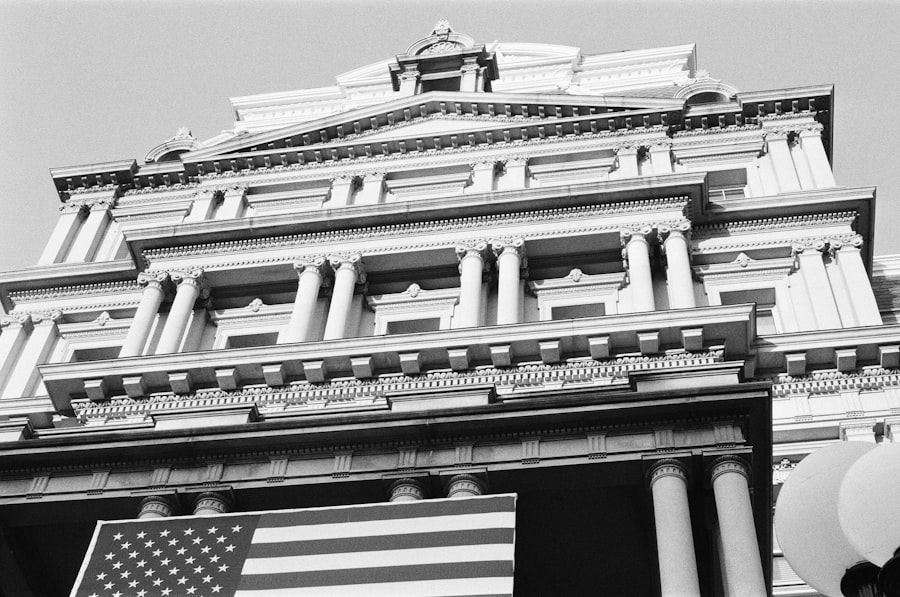Paul Volcker, a name synonymous with bold economic policy, served as the Chairman of the Federal Reserve from 1979 to 1987. His tenure is often remembered for its decisive actions in combating rampant inflation that plagued the American economy during the late 1970s and early 1980s. Volcker’s approach was characterized by a willingness to take risks and implement drastic measures, which ultimately reshaped the landscape of U.S.
monetary policy. As you delve into the intricacies of his decisions, you will discover how his leadership not only addressed immediate economic challenges but also laid the groundwork for future financial stability. Volcker’s background is equally compelling.
Born in 1927, he graduated from Princeton University and later earned a master’s degree in economics from Harvard. His career spanned various roles in both the public and private sectors, including positions at the Federal Reserve Bank of New York and the U.S. Treasury.
This diverse experience equipped him with a unique perspective on economic issues, allowing him to navigate the complexities of monetary policy with a deft hand. As you explore his legacy, you will come to appreciate how his intellectual rigor and commitment to sound economic principles guided his actions during one of the most turbulent periods in American history.
Key Takeaways
- Paul Volcker was the chairman of the Federal Reserve from 1979 to 1987 and is known for his tough stance on inflation.
- In 1979, the US was facing high inflation, slow economic growth, and high unemployment, creating a challenging economic climate.
- Volcker made the controversial decision to raise interest rates to combat inflation, leading to higher borrowing costs and reduced consumer spending.
- The interest rate hike initially led to a decrease in inflation, but also resulted in a spike in unemployment and a recession.
- The stock market and housing market both experienced significant downturns as a result of the interest rate hike, leading to widespread economic hardship.
The Economic Climate in 1979
By 1979, the U.S. economy was grappling with a perfect storm of challenges. Inflation had surged to alarming levels, reaching double digits for the first time since World War
The consumer price index was climbing rapidly, driven by soaring oil prices and supply chain disruptions. As you consider this economic backdrop, it becomes clear that Volcker was stepping into a crisis that demanded immediate and effective action. The public’s confidence in the economy was waning, and many Americans were feeling the pinch of rising prices on everyday goods.

In addition to inflation, the economy was also experiencing stagnant growth, a phenomenon that economists would later label “stagflation.” Unemployment rates were creeping upward, and businesses were hesitant to invest in expansion due to uncertainty about future economic conditions. This environment created a sense of urgency for Volcker as he took the helm of the Federal Reserve. You can almost feel the weight of expectation on his shoulders as he prepared to confront these formidable challenges head-on.
The Decision to Raise Interest Rates
| Metrics | Data |
|---|---|
| Current Interest Rate | 2.5% |
| Inflation Rate | 3.2% |
| Unemployment Rate | 4.5% |
| GDP Growth Rate | 2.8% |
Faced with escalating inflation, Volcker made the bold decision to raise interest rates significantly. In October 1979, he announced a shift in monetary policy that would see the Federal Reserve adopt a more aggressive stance on controlling money supply and interest rates. This decision was not made lightly; it was rooted in a deep understanding of economic theory and a recognition that inflation could spiral out of control if left unchecked.
As you reflect on this pivotal moment, consider how Volcker’s willingness to embrace unorthodox measures set him apart from his predecessors. The initial increase in interest rates was staggering, with the federal funds rate soaring from around 11% to over 20% within just a few months. This dramatic move sent shockwaves through financial markets and the broader economy.
You might wonder how such a steep rise could be justified, but Volcker believed that decisive action was necessary to restore credibility to the Federal Reserve and signal a commitment to fighting inflation.
Impact on Inflation
The impact of Volcker’s interest rate hikes on inflation was profound and immediate. As borrowing costs soared, consumer spending began to slow down significantly. Businesses faced higher costs for financing their operations, leading many to curtail expansion plans or even lay off workers.
You can see how this tightening of credit began to cool off an overheated economy, as consumers became more cautious about their spending habits. The initial months following the rate increases were marked by uncertainty, but Volcker remained steadfast in his belief that these measures were essential for long-term stability. Over time, the effects of these policies became evident.
By the mid-1980s, inflation rates began to decline steadily, eventually falling below 4%. This marked a significant turnaround from the double-digit inflation that had characterized the late 1970s. As you analyze this transformation, it is important to recognize that Volcker’s actions not only curbed inflation but also restored faith in the Federal Reserve’s ability to manage monetary policy effectively.
His commitment to fighting inflation laid the groundwork for a new era of economic stability that would benefit future generations.
Impact on Unemployment

While Volcker’s policies successfully addressed inflation, they came at a cost: rising unemployment rates. As interest rates climbed, businesses faced increased borrowing costs, which led many to reduce their workforce or halt hiring altogether. The unemployment rate surged from around 5% in 1979 to over 10% by 1982.
You can imagine the toll this took on American families as job losses mounted and economic uncertainty loomed large. The social ramifications of these changes were profound, as communities grappled with the fallout from an economy in transition. Despite these challenges, Volcker remained resolute in his commitment to combating inflation.
He understood that short-term pain might be necessary for long-term gain. As you consider this perspective, it becomes clear that Volcker’s approach was not merely about managing numbers; it was about restoring confidence in the economy and ensuring sustainable growth for years to come. While many criticized him for prioritizing inflation control over employment levels, history would ultimately vindicate his decisions as necessary for stabilizing the economy.
Impact on the Stock Market
The stock market reacted sharply to Volcker’s interest rate hikes, reflecting investor anxiety about the future of corporate profits amid rising borrowing costs. Initially, stock prices plummeted as uncertainty gripped Wall Street. You can visualize traders reacting to news of increasing interest rates with trepidation, fearing that higher costs would squeeze profit margins and stifle economic growth.
The volatility of this period was palpable, as investors grappled with conflicting signals about the health of the economy. However, as inflation began to decline and economic conditions stabilized in subsequent years, the stock market rebounded dramatically. By the mid-1980s, investors regained confidence as corporate earnings improved and inflationary pressures eased.
You might find it fascinating how Volcker’s policies ultimately paved the way for one of the longest bull markets in U.S. history during the latter part of the 1980s and into the 1990s. This resurgence underscored the importance of sound monetary policy in fostering an environment conducive to investment and growth.
Impact on the Housing Market
The housing market also felt the effects of Volcker’s interest rate hikes, as mortgage rates soared alongside other borrowing costs. For prospective homebuyers, this meant higher monthly payments and increased difficulty in securing financing for new homes. You can imagine how this shift created a ripple effect throughout the real estate sector, leading to a slowdown in home sales and construction activity.
Many families found themselves priced out of the market or forced to reconsider their housing options. As time passed and inflation began to subside, mortgage rates eventually followed suit, leading to a gradual recovery in the housing market. By the mid-1980s, lower interest rates helped stimulate demand for homes once again.
You may find it interesting how this cycle illustrates the interconnectedness of various economic sectors; as monetary policy shifted, so too did consumer behavior and market dynamics. Ultimately, while Volcker’s policies initially dampened housing activity, they set the stage for a more stable real estate market in subsequent years.
Controversy and Criticism
Volcker’s aggressive approach to monetary policy was not without its detractors. Many critics argued that his focus on controlling inflation came at an unacceptable cost to employment and economic growth. You might find it intriguing how some economists labeled his policies as overly harsh or even reckless, suggesting that they exacerbated an already challenging economic environment.
The debate surrounding his decisions highlighted a fundamental tension within economic policy: balancing inflation control with fostering growth. Moreover, public sentiment during this period was often fraught with frustration as families struggled with rising unemployment and stagnant wages. You can sense how this discontent fueled criticism of Volcker’s leadership at the Federal Reserve; many Americans felt that their livelihoods were being sacrificed for abstract economic goals.
Long-Term Effects of the Interest Rate Hike
The long-term effects of Volcker’s interest rate hikes are still felt today in various aspects of economic policy and practice. His commitment to fighting inflation established a precedent for future Federal Reserve chairs who would follow in his footsteps. You may notice how subsequent policymakers have often referenced Volcker’s approach when grappling with similar challenges in managing inflationary pressures while promoting growth.
Additionally, Volcker’s actions contributed to a cultural shift within central banking toward prioritizing price stability as a primary objective of monetary policy. This focus has influenced how central banks around the world operate today, emphasizing transparency and accountability in their decision-making processes. As you reflect on these long-term effects, it becomes evident that Volcker’s legacy extends far beyond his tenure at the Federal Reserve; it has shaped modern economic thought and practice in profound ways.
Volcker’s Legacy
Paul Volcker’s legacy is one of courage and conviction in the face of daunting economic challenges. His willingness to take bold action during a time of crisis has earned him respect among economists and policymakers alike. You might find it inspiring how he navigated complex issues with integrity and foresight, ultimately transforming U.S.
monetary policy for generations to come. Moreover, Volcker’s influence extends beyond economics; he became a symbol of principled leadership during turbulent times. His commitment to public service and dedication to improving economic conditions have left an indelible mark on American society.
As you consider his legacy, you may appreciate how Volcker’s story serves as a reminder of the importance of strong leadership in addressing pressing national issues.
The Lasting Impact of the 1979 Interest Rate Hike
In conclusion, Paul Volcker’s decision to raise interest rates in 1979 had far-reaching implications for both the U.S. economy and global monetary policy. While his actions were met with criticism and controversy at the time, they ultimately proved essential in curbing inflation and restoring stability to financial markets.
As you reflect on this pivotal moment in history, it becomes clear that Volcker’s legacy is one of resilience and determination—a testament to what can be achieved through decisive action in times of crisis. The lasting impact of these interest rate hikes continues to shape economic discourse today, influencing how policymakers approach challenges related to inflation and growth. You may find it fascinating how Volcker’s story serves as both a cautionary tale and an inspiring example for future leaders navigating complex economic landscapes.
Ultimately, his contributions remind us that effective leadership requires not only courage but also an unwavering commitment to sound principles—qualities that will remain relevant as we face new challenges in an ever-evolving global economy.
In 1979, Paul Volcker, then Chairman of the Federal Reserve, implemented a series of aggressive interest rate hikes to combat the rampant inflation that plagued the U.S. economy. This bold move, though initially controversial, is credited with stabilizing the economy and setting the stage for future growth. For a deeper understanding of the economic climate during that era and the impact of Volcker’s policies, you might find this article insightful. It provides a comprehensive overview of the economic challenges and the decisive actions taken to address them.
WATCH IT HERE! 💰 The Secret History of the Dollar: How Oil Replaced Gold (The Petrodollar Mystery)
FAQs
What was the Paul Volcker interest rate hike in 1979?
The Paul Volcker interest rate hike in 1979 refers to the actions taken by the Federal Reserve under the leadership of Chairman Paul Volcker to combat high inflation by raising interest rates.
Why did Paul Volcker raise interest rates in 1979?
Paul Volcker raised interest rates in 1979 in an effort to control the high inflation that was plaguing the United States at the time. The Federal Reserve believed that raising interest rates would help to slow down the economy and reduce inflationary pressures.
What were the effects of the Paul Volcker interest rate hike in 1979?
The Paul Volcker interest rate hike in 1979 led to a significant increase in interest rates, which in turn caused a recession in the early 1980s. However, it also succeeded in bringing down inflation and laying the groundwork for a period of economic stability and growth.
How did the Paul Volcker interest rate hike impact the economy?
The Paul Volcker interest rate hike had a significant impact on the economy, leading to a period of high unemployment and slow economic growth. However, it also succeeded in bringing down inflation and setting the stage for a period of sustained economic expansion in the 1980s and 1990s.
What is the legacy of the Paul Volcker interest rate hike?
The Paul Volcker interest rate hike is widely regarded as a bold and necessary move to combat high inflation, and it is credited with bringing down inflation and setting the stage for a period of economic stability and growth in the United States. Paul Volcker’s actions are seen as a key factor in restoring confidence in the Federal Reserve’s ability to control inflation.
